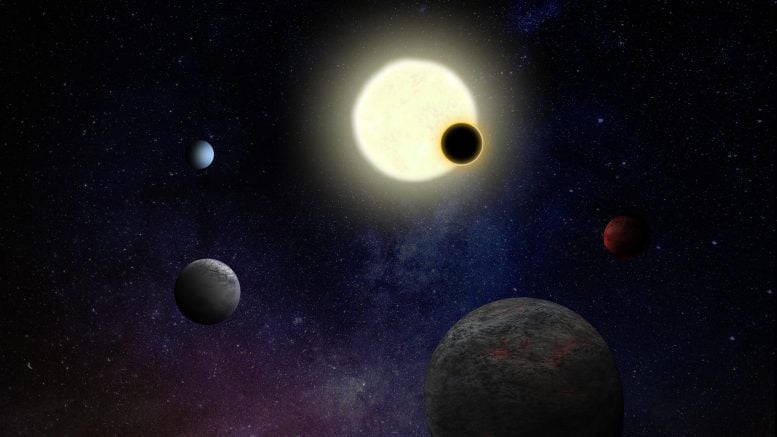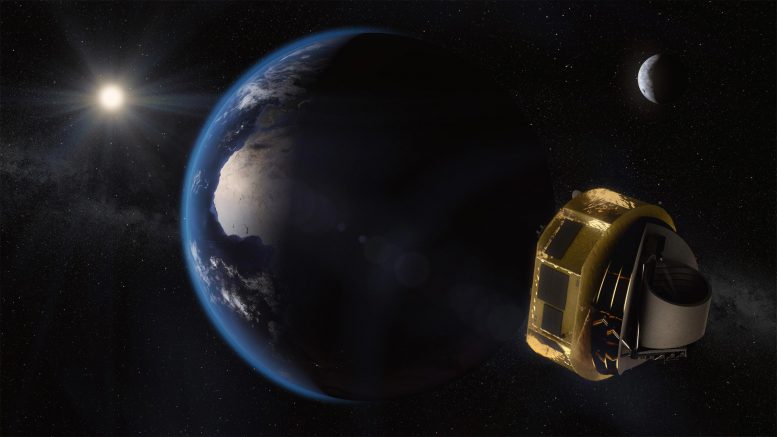
Ariel, ESA’s mission to study the chemical makeup of distant exoplanets, has cleared its Preliminary Design Review (PDR), marking a significant step toward its 2029 launch. The mission will examine about 1000 exoplanets and contribute to understanding planetary formation and the search for extraterrestrial life.
Ariel (Atmospheric Remote-sensing Infrared Exoplanet Large-survey), ESA’s next-generation mission to observe the chemical makeup of distant exoplanets, has passed a major milestone after successfully completing its payload Preliminary Design Review (PDR).
The successful completion of the payload PDR marks a crucial step forward for Ariel, demonstrating that the mission’s payload design meets all the required technical and scientific specifications, and no holdups were found for the foreseen launch in 2029.
The Ariel payload will consist of an integrated suite, comprising the telescope, the Ariel infrared spectrometer (AIRS), and the Fine Guidance System (FGS) module. Additionally, it includes the necessary supporting hardware and services.
The Ariel consortium payload team prepared 179 technical documents and addressed 364 questions for a panel of ESA experts, who evaluated the feasibility, performance, and robustness of the payload design. The review scrutinized every aspect of the proposed payload to ensure that the designed systems meet the technical, scientific, and operational requirements of the mission.
As a result of this major achievement, the mission can now proceed to payload CDR (Critical Design Review) and begin to manufacture its first prototype models.

“This is really a big step for the mission and we are very pleased with the outcome,” says Theresa Lueftinger, ESA Ariel project scientist. “The ESA team, the Ariel Consortium payload team, and Airbus put a huge amount of work and effort into the success of this major milestone and the collaboration went extremely well. All the elements have been put together and evaluated and we now know that the mission is feasible and we can do the science.”
Ariel will observe about 1000 exoplanets, ranging from rocky planets to gas giants. The mission will study the nature of these exoplanets, both individually and as populations, and monitor the activity of their host stars.
Using various techniques, Ariel will detect signs of well-known ingredients in the planets’ atmospheres, such as water vapor, carbon dioxide, and methane. It will also detect exotic metallic compounds to decipher the overall chemical environment of the distant star system. Ariel will study clouds on a few planets and monitor variations in their atmospheres on both daily and seasonal timescales.
Ariel’s observations of these diverse worlds will provide insights into the early stages of planetary and atmospheric formation, and their evolution over time. These observations will contribute to our understanding of our own Solar System and lay the groundwork for future searches for life elsewhere in the Universe and planets similar to Earth.
About Ariel
Ariel was selected as the fourth medium (‘M-class’) mission in ESA’s Cosmic Vision 2015–25 plan in March 2018. It was adopted in November 2020 and is currently under development.
Ariel is a collaboration between ESA and the Ariel Mission Consortium. Involving more than 50 institutes from 16 European countries, the Consortium will provide the mission’s payload module, including the reflector telescope and associated science instruments.
Meanwhile, Airbus will lead the European industrial consortium that is building the satellite and provide expertise and support to ESA and the Ariel Mission Consortium for the development of the payload module. NASA and other space agencies are also contributing to the payload.
ESA will provide the service module, the integration and testing of the spacecraft flight model, as well as being responsible for the launch and operations. After launch, operations will be conducted jointly by ESA and the Consortium.
Never miss a breakthrough: Join the SciTechDaily newsletter.
Follow us on Google, Discover, and News.